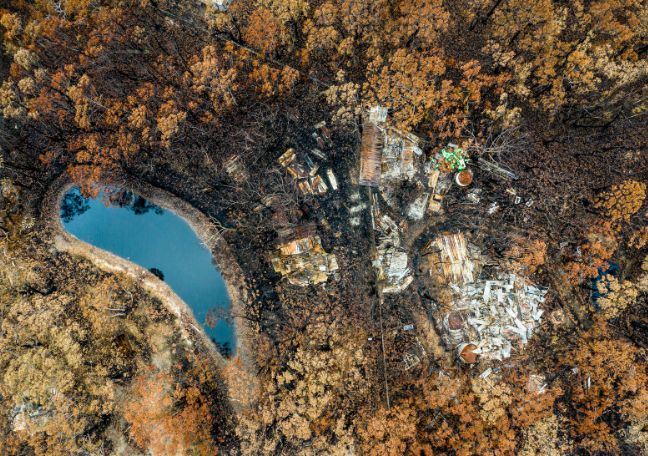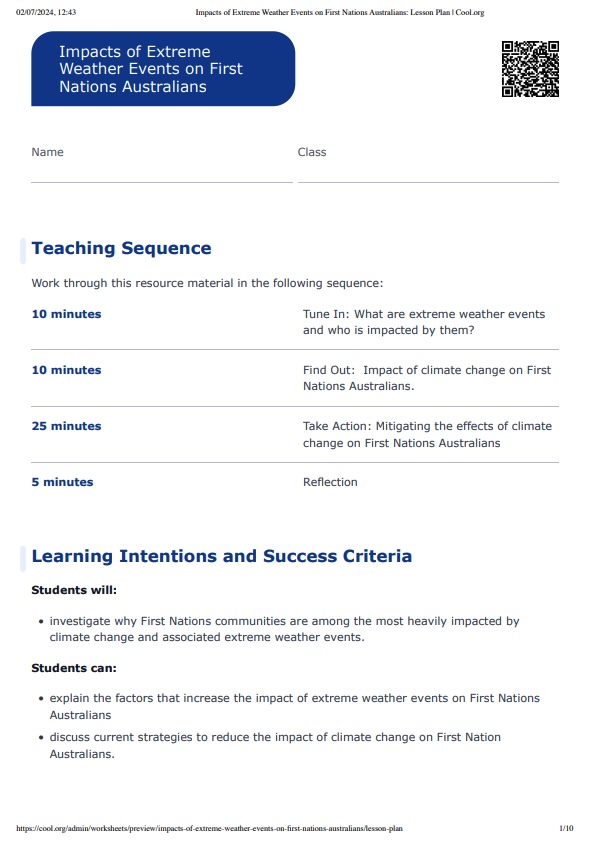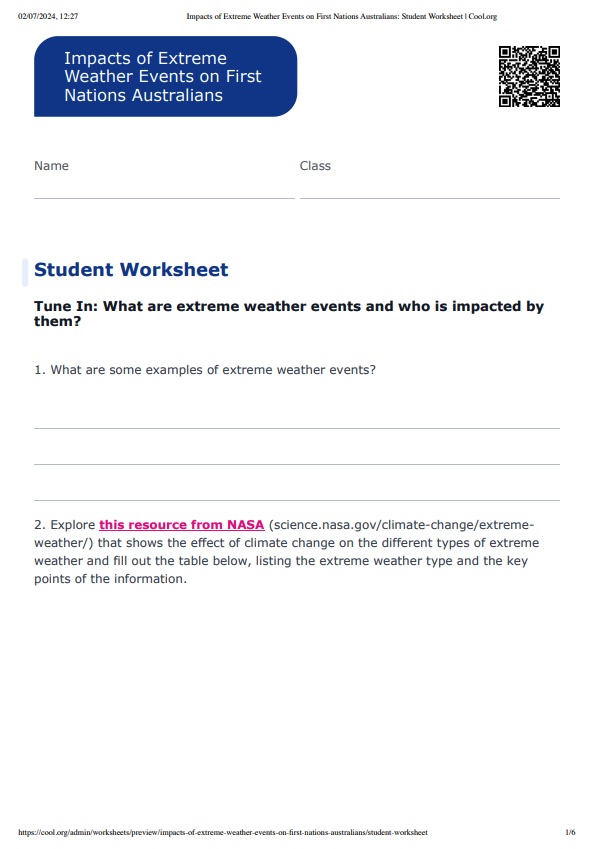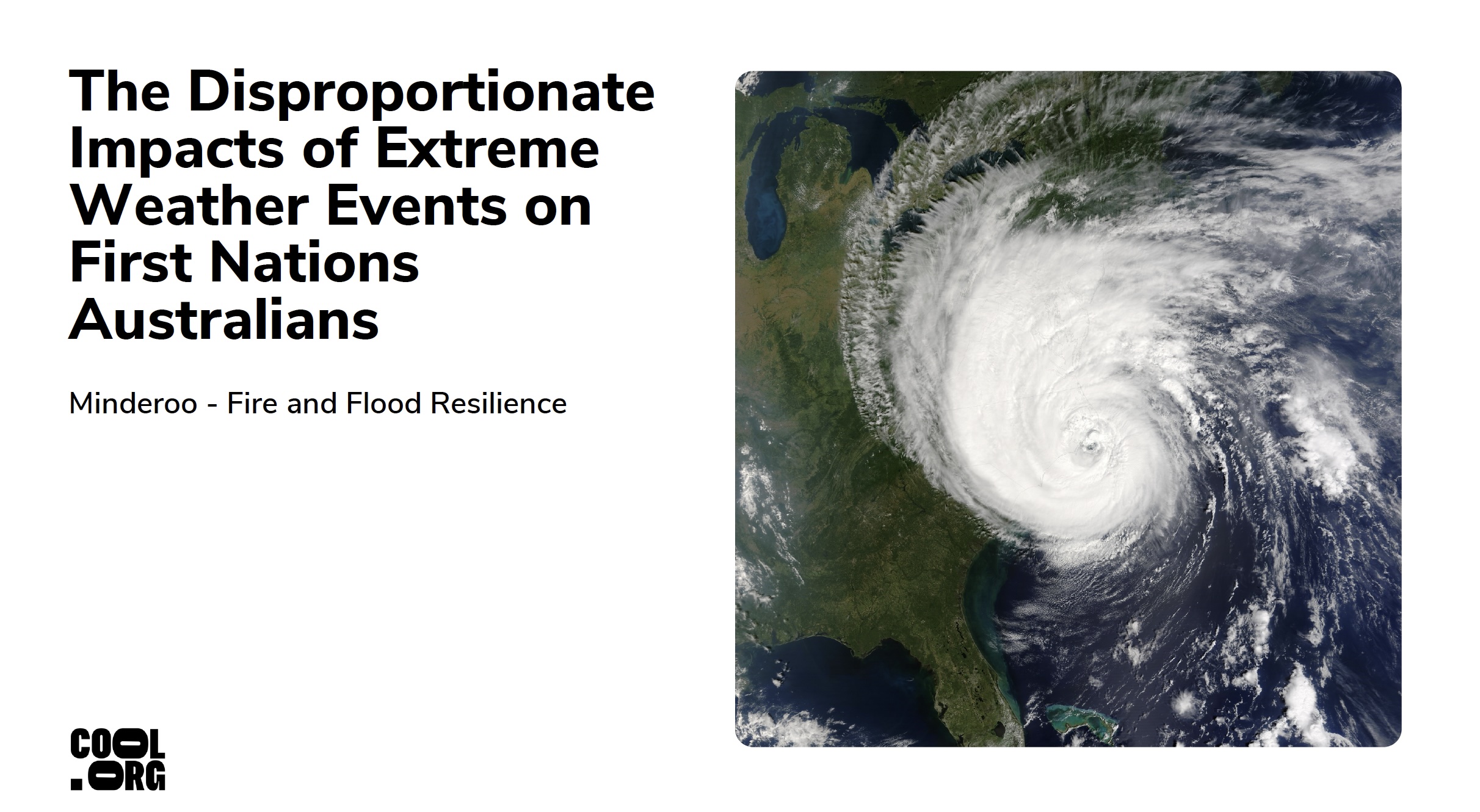Lesson summary
Students will understand the reasons for and consequences of spatial variations in human wellbeing in Australia. Students will investigate why First Nations communities are among the most heavily impacted by climate change and associated extreme weather events.
Learning intentions:
Students will...
- investigate why First Nations communities are among the most heavily impacted by climate change and associated extreme weather events.
Success criteria:
Students can...
- explain the factors that increase the impact of extreme weather events on First Nations Australians
- discuss current strategies to reduce the impact of climate change on First Nations Australians.
Lesson guides and printables
Curriculum links
Select your curriculum from the options below.
Lesson details
Skills
This lesson is designed to build students’ competencies in the following skills:
- critical thinking
- collaboration
- communication
- empathy
- intercultural understanding
- problem-solving
Curriculum Mapping
Australian Curriculum (v9.0) content description:
Year 10 Geography
- Reasons for, and consequences of, spatial variations in human wellbeing in Australia, including for First Nations Australians. (AC9HG10K07)
Relevant parts of Year 10 achievement standards: By the end of Year 10, students explain how the interactions of people and environmental processes at different scales change the characteristics of places. They explain the effects of human activity on environments and the effect of environments on human activity over time. They evaluate the implications of a distribution.
NSW Syllabus outcomes: GE5-3, GE5-6, GE5-7, GE5-8
General capabilities: Critical and Creative Thinking, Digital Literacy, Intercultural Understanding, Literacy
Cross-curriculum priority: Aboriginal and Torres Strait Islander Histories and Cultures.
Level of teacher scaffolding: Medium - Teachers will need to facilitate class discussions, support students in consolidating information and guide students’ map reading and creating skills.
UN Sustainable Development Goals
Goal 13 | Take urgent action to combat climate change and its impacts
- Target 13.3: Improve education, awareness-raising and human and institutional capacity on climate change mitigation, adaptation, impact reduction and early warning
Resources Required
- A3 paper
- Climate Change and Aboriginal and Torres Strait Islander Health Factsheet
- Devices for students to access online resources
- Device to share presentation with students
- Aboriginal and Torres Strait Islander Populations Map
- Student Worksheet
- Impacts of Extreme Weather Events on First Nations Australians Presentation
- Whiteboard
- Whiteboard markers
Additional Info
We would like to acknowledge and express our gratitude for the expertise and advice provided in the creation process of these resources from the following parties:
- The Australian Institute for Disaster Resilience (AIDR)
- Bhiamie Williamson (Monash University)
Related Professional Learning
How to Teach a Unit on Fire and Flood Resilience:
Quick summary: This course will provide a roadmap for how to approach teaching a unit on fire and flood resilience. While primarily focused on fire and flood resilience, it will reference the importance of an all-hazards approach to disaster resilience education.





Welcome back!
Don't have an account yet?
Log in with:
Create your free Cool.org account.
Many of our resources are free, with an option to upgrade to Cool+ for premium content.
Already have an account?
Sign up with:
By signing up you accept Cool.org's Terms and Conditions(Opens in new tab) and Privacy Policy(Opens in new tab).